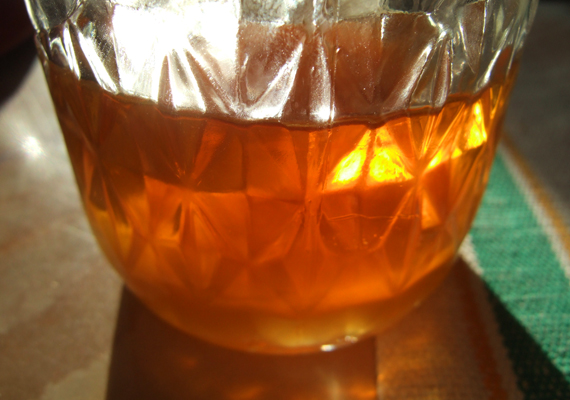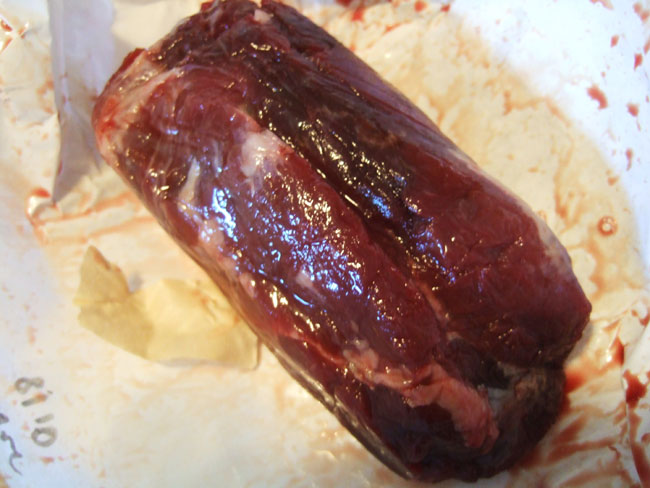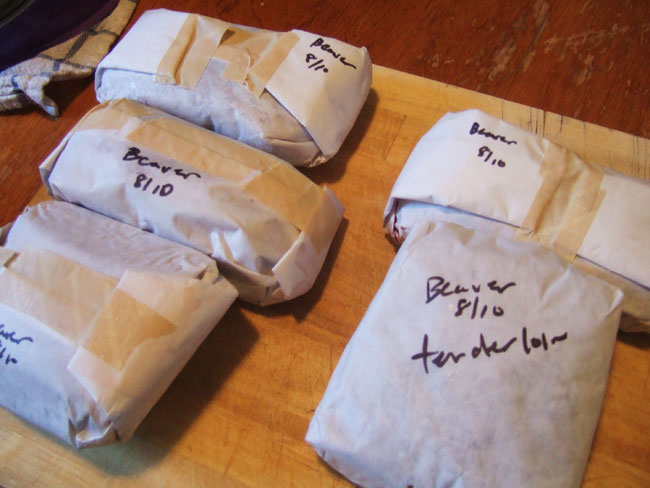 Roast bear with mushrooms and a hot apple toddy; film still from an upcoming episode of New York Wave.
Roast bear with mushrooms and a hot apple toddy; film still from an upcoming episode of New York Wave.
Over the past few weeks, I’ve been shooting a short documentary about my work for PBS Japan, for a show called New York Wave. They wanted me to prepare dinner for the show’s host and asked if there was anything unusual that I have been aching to cook up.
It came to me like a flash: Roast Bear.
A few months previous, I had been digging through the massive menu collection at the New York Public Library. One of their earliest menus, from 1842, was a dinner thrown in New York in honor of Charles Dickens. Over 3,000 guests attended, and the menu was extensive (See the original menu here.)
Roast Bear was served that evening. I thought it was so unusual and fascinating–I had never seen bear included on a menu, let alone in New York city. After doing a little more reading (in the very handy Oxford Encyclopedia of Food and Drink in America) I found out that bear was commonly hunted and eaten in early America; in the 19th century, it was still sold in markets in New York. Until the end of the century, roast leg of bear was served as a delicacy in New York restaurants.
It was decided: we would eat bear for dinner. So where does one come across bear meat in this day and age? You cannot sell hunted game meat in America–game sold in markets today is farmed. The best way to get it is to make a few friends in Alaska, which I happen to have. It’s legal to hunt bear there, and if you ask really nice, someone will know someone who would be willing to ship you a roast or two. And if you’re really lucky, about six pounds of black bear rump meat and tenderloin will arrive via airmail to your Queens apartment.
The next challenge was figuring out how to cook the meat. I consulted Feeding America to see if any recipes for bear had appeared in American cookbooks. I came up with one hit, from Miss Corson’s Practical American Cookery (1886):

I consulted Miss Corson’s recipe for roast beef; and she recommends searing it, roasting it, and then preparing a simple gravy from the pan drippings. This method sounded about right; I wanted to prepare the meat simply to get the full effect of its flavor.
***
How to Roast a Bear
Eating omnivores, like bear, can give you all kinds of parasites. It’s best to cook it well done; I used the same temperature guidelines recommended for cooking pork. I cooked a rump roast, but this recipe should work well for any smaller cut of bear.
1 bear roast; 1-4 lbs
Salt and Pepper
Butter
1-2 cups mushrooms (or squash, parsnips, etc. Something earthy and nice)
1 tablespoon flour
2 cups boiling water
1. Preheat oven to 425 degrees. Rinse bear meat and part dry. Cover generously with salt and pepper.
2. Clarify the butter: heat it in a microwave until it melts, then gently skim off the fatty solids that have separated to the top. Pour butter into a cast iron skillet, being careful not to disturb any sediment that may have sunk to the bottom.
3. Heat skillet over high heat. Place bear in skillet and sear on all sides until browned. Add mushrooms to the skillet–it’s ok if the bear is buried in shrooms. They’ll cook down.
4. Move bear directly from stovetop into oven; roast 10 minutes per pound, until a meat thermometer in the center reads 145 degrees. Remove from oven and allow to rest before carving.
5. In the meantime, make the sauce. Pour bear drippings from the skillet into a saucepan and add flour. Cook over medium heat until the flour is browned, then add water while whisking constantly. Let the sauce cook until it thickens to your desired consistency–anything from a thin sauce to a thick gravy is fine.
6. Carve meat into one-inch thick slices. Serve, topped with mushrooms and sauce.
***
The gravy is a must because the meat is a little dry; and because the sauce is made with pure bear goodness, it doesn’t detract from the flavor, but enriches it.
After my first bite of bear, if someone had told me it was beef, I would have believed them. There is a darker, gamier note, but not the stringy, gamey meat I expected. It was more than edible–its was good. I ate my whole plate.
 A golden jar of my parent’s homemade maple syrup.
A golden jar of my parent’s homemade maple syrup.









